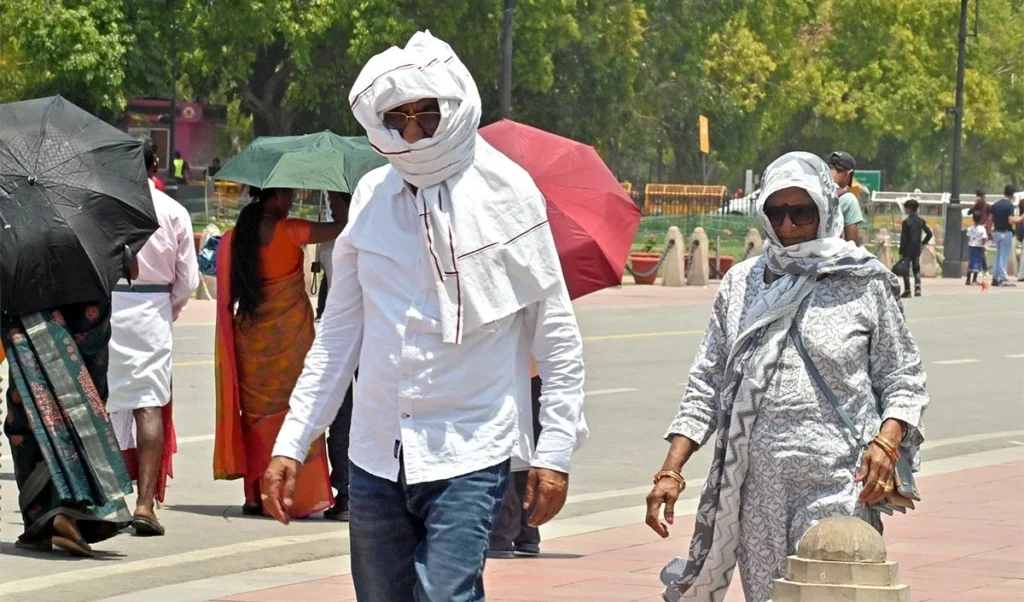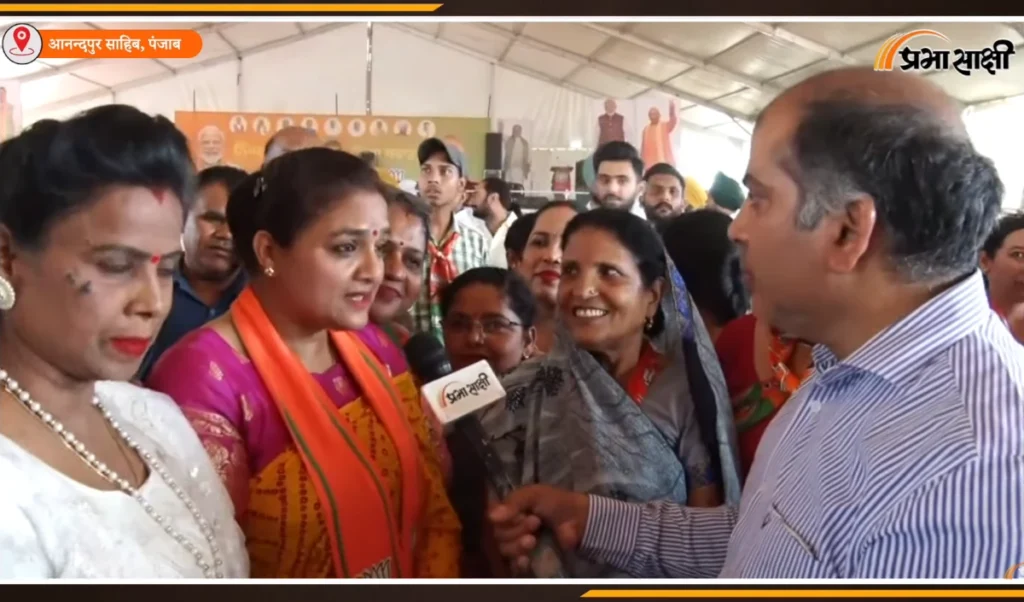The BJP on Tuesday stormed to power in Odisha, ending the 24-year rule of BJD leader Naveen Patnaik. Proving all political analysts wrong, the Bharatiya Janata Party won 78 of the 147 assembly seats and inflicted a crushing defeat on the Biju Janata Dal (BJD), which had failed to win a single seat in the Lok Sabha elections. Patnaik, a five-time Odisha CM, came back from the brink of creating history as the longest-serving chief minister in India. This was Patnaik’s first electoral defeat in a political career spanning over 25 years.
Naveen Patnaik was first sworn in as Odisha chief minister in 2000 and has been in power for five consecutive terms. However, the epochal mistake he made was to let his non-Odia and Tamil Nadu-born former IAS officer rival lead his 2024 campaign. There was palpable anxiety on the ground as discussions were going on in the panchayat on whether to give the ageing chief minister another chance and risk handing over the state’s affairs to someone who is recognised for his stellar work but is widely perceived as an ‘outsider’.
Twenty-four years after his first oath, the 78-year-old Patnaik remains a ‘father figure’, fondly called ‘Nabina’. But there were real issues at the ground level, with his close aide VK Pandian assuming power in the government and the party that was disproportionate to his position. Apart from the Odia pride factor, there was fear of jobs and contracts going to outsiders and murmurings within the BJD about whether Naveen Patnaik was grooming a former bureaucrat to take over the reins of the government and the party.
The BJP and the Congress exploited the issue to their fullest, but the Narendra Modi factor turned the tide in the saffron party’s favour. In late February, alliance talks between the BJD and the BJP had created a stir in the state, raising questions about both the need and political wisdom of the ruling party and the Opposition coming together to contest the elections.
Though Patnaik has always maintained that the BJD is equidistant from both the Congress and the BJP, the truth is that the party has always defended the BJP-led NDA on controversial laws like the abrogation of Article 370 and even the Delhi Services Bill. It has been an undeclared ally of the BJP at the Centre. However, on March 22, BJP state president Manmohan Samal ended the suspense, saying there will be no alliance between the BJD and the BJP.
He thanked Patnaik for his support at the Centre for so many years. Samal announced that the BJP would contest all 21 Lok Sabha seats and 147 assembly seats on its own. His announcement was greeted with joy at the BJP party office, but there was no such joy at the BJD office. Meanwhile, the Congress, which once ruled the state and has been out of power since 2000, sensed an opportunity. Taking advantage of the proximity of the BJD and BJP, it tried to project itself as the real opposition in the state. Barely a month later, in mid-April, senior Congress leader and Wayanad MP Rahul Gandhi launched the party’s campaign in Kendrapara and coined an acronym – PANN – to challenge the BJD and the BJP.
He said, “Here (Odisha) BJD and BJP are tied in the knot of marriage or you can call it partnership. They are together and in this marriage they have given PANN to the people of Odisha.” ‘PANN’ stood for VK Pandian, Amit Shah, Narendra Modi and Naveen Patnaik.
Patnaik faced the Modi wave twice in 2014 and 2019. In 2019, when Patnaik was seeking his fifth consecutive win in the assembly elections, the BJD’s vote share increased to 44.7% from 43.4% in 2014. With 112 wins, it was just five seats less than in 2014.
The BJP won 23 assembly seats in 2019, 13 more than in 2014, and emerged as the main opposition party in the state. At 32.5%, the BJP added an impressive vote share compared to 18% in 2014.
The Congress won just nine of the 147 seats; its vote share fell from 25.7% in 2014 to 16.1% in 2019. As far as the 21 Lok Sabha constituencies are concerned, the BJD won 12 seats in 2019, compared to 20 in 2014. In terms of vote share, the regional party got 42.8% of the votes compared to 44% in 2014. The BJP won an impressive eight Lok Sabha constituencies, while it had won just one seat in 2014. In terms of vote share, the BJP made significant gains from 21.55% in 2014 to 38.4%. The Congress won just one Lok Sabha constituency, with its vote share falling from 26% in 2014 to 13.8% in 2019.
Patnaik, who is aiming to win his sixth consecutive term, launched the BJD’s campaign from Hinjili in Aska parliamentary constituency on April 25, 40 days after the election dates were announced and more than a month after coalition talks were called off. Echoing the BJP’s campaign, Patnaik promised to make the state No. 1 by its centenary year 2036. He promised a youth budget and spoke of a ‘5T innovation’ guarantee. He dubbed the opposition as “anti-development” and appealed to people to vote for the “jodi shankha” (twin conches).
They said “The pair of conches is a symbol of Odisha, a symbol of development. With your support, the BJD will win a landslide victory in the Assembly and perform well in the Lok Sabha. Our victory march will continue.
This speech was perhaps the longest delivered by Patnaik this election season, lasting a little over five minutes in which he simply asked if his government’s various welfare schemes were good and then asked if Naveen Patnaik was good. Repeating the strategy of 2019, when he contested from Hinjili and Bijepur constituencies, this time too Patnaik contested from two seats – Hinjili and Kantabanji.
However, unlike 2019, there was one major change in Naveen Patnaik’s campaign. And that was Pandian’s presence in every frame with Patnaik. The suave and politically astute Patnaik had never shared space with any other BJD leader in any way during his political career. Pandian’s presence was so pervasive that even when Patnaik made some speeches, Pandian was in the frame holding the mic, even though there was already a mic on the podium.
A video of Pandian moving Patnaik’s shaking left hand away from public view went viral and gave credence to the Opposition’s allegation that the state was being ruled by a non-Odia and that Patnaik was no longer in control.
Pandian, considered close to the chief minister as a bureaucrat, had taken voluntary retirement in October 2023, leading to speculation that he would succeed Naveen Patnaik as he is unmarried and has no heir. The Congress campaigned on the slogan ‘Odisha for Odisha’ while the BJP termed the elections as a ‘fight for Odisha’s asmita (pride)’.
Prime Minister Narendra Modi led the BJP’s campaign and addressed 10 rallies across the state. Addressing a rally in Naveen Patnaik’s home turf Berhampur on May 6, the Prime Minister said: “Once the BJP government is formed, we will implement all our promises and this is Modi’s guarantee. The BJD’s expiry date is June 4. Today is May 6 and on June 6, the BJP will decide its chief ministerial face.
On June 10, the BJP’s chief minister will be sworn in in Bhubaneswar. I have come to invite all of you to attend the swearing-in ceremony.” At his second rally in Nabarangpur on the same day, the Prime Minister said: “Odisha will get its first chief minister from the BJP. The chief minister will be a son or daughter of Odisha, not an outsider.” On the same day, Pandian said Naveen Patnaik would be sworn in on June 9.


